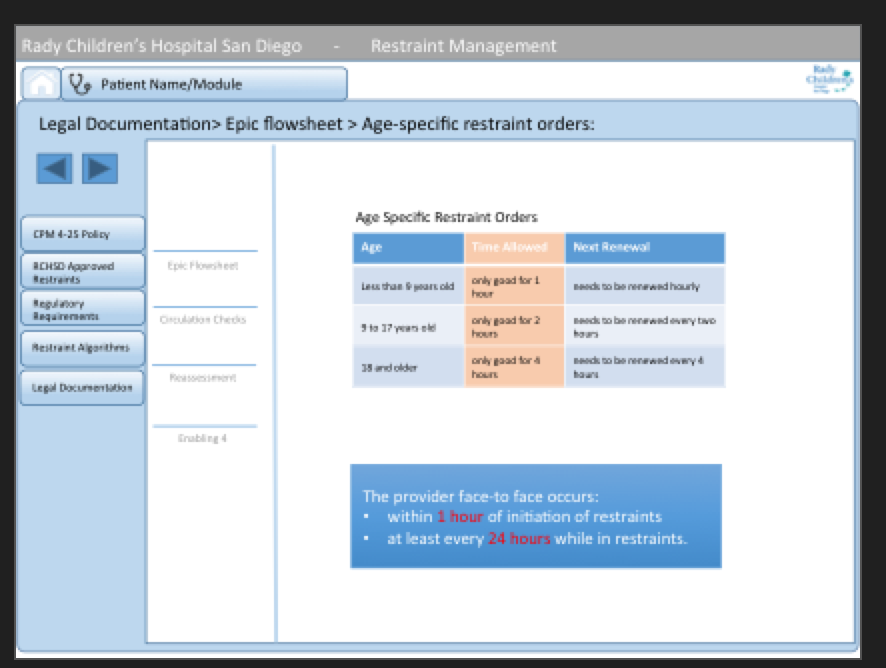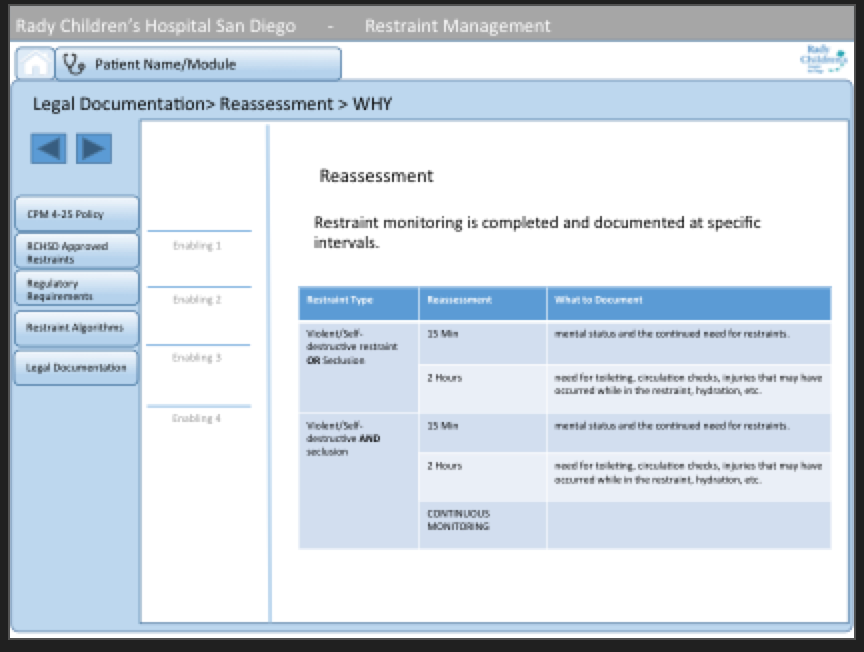This post is a modified presentation to my learning technology class at SDSU. My final project was made in collaboration with Megan La Grange, Justin McNeely, Karen Meier, and Susan Merriman. I’d like to call out the specific hard work of Justin and Megan for all their design work and Captivate expertise
GOAL:
Our project set out to ensure a practicing hospital staff got up to date with federal standards and then passed a certified course on the subject.
DESIGN:
The best case for Far Transfer knowledge is through hands on experience. Without that option, online simulation and testing were the next best option. To simulate the working environment, we based our design on the EPIC electronic healthcare records. This as an UI that our learning audience (the hospital staff) used for record keeping continually throughout the day. The staff was well-familiar with the layout. This design decreased the time the learners required to navigate and interact with the course itself (less cognitive load, a theory with which some disagree).
Other design considerations included:
- Avoided extraneous graphics and design elements that have little to negative impact on learning
- Created simple navigation locating the learners journey for self-paced learning (adults learners like choices)
- Color choices, font placement, tables, and audio script complimented one another in layers to avoid distracted learning, based on cognitive load theory
For procedural content type, our team used decision tables when the procedure branched. Decision provide simple actions for if... then... scenarios.
Learning Theories in Action:
Throughout the 160 slide Captivate file, we used simple text and one image per slide standard to focus learning. Pictures are meant to supplement the information when needed. We removed extraneous design and pictures to remove distractions. Text is placed next to pictures to eliminate the need for the eye to search for content.
At the beginning of the fourth training module on restraint management algorithms, we introduced a pedagogical agent. While the debate is still out on the efficacy of these simulated humans, there is a strong implication for the use of pedagogical agents when people may be losing interest in a course, as it creates a de facto visible author (Clark & Mayer, E-learning and science of instruction, 2008). It helps to arouse the attention of the learner.
We also used a human, female voice. Female voices perform better across the board to promote learning. While the voice is polite, the commands within the course are too the point. Over politeness for commands in computer based training can detract from learning in experts according to the expert reversal theory.
Since our target audience is adult learners, we provided our learners with the reason why they are learning at the beginning of the course as well as at the start of each module. Allowing adult learners to choose their own learning path and mode of learning is important. Our main page allows learners to choose where to start their course, as well as provided a time for the module. In addition, several of our modules allowed learners to watch a video, read the text, or both.
Assessment, Practice & Examples:
Far transfer knowledge requires lots and lots of practice and examples. When there is a high cost for mistakes (as in the case at the hospital) more practice with simulated high-pressure situations to promote high psychological engagement is necessary. It's better to err on the side of more practice in these situations.
Immediately challenging any learner, specifically adult leaners, helps promotes far transfer knowledge. This is needed for unique resolution, problem-solving skills for principle content types
We also used worked examples, but sparingly. Worked examples are best for novice learners but can have a negative learning impact on experts. This is based on the Expertise Reversal Affect, where learning content and design that promotes learning for beginning learners is detrimental to those who are advanced in the area of study.
When designing our scenarios and assessments, we made sure to keep the feedback next to the original question. This follows the continuity principle, that decreases confusion as learners look for the answer they selected. We also avoided all True/False questions as these problems do not promote the transfer of knowledge.
If you have any questions, please leave them in the comment section below.






